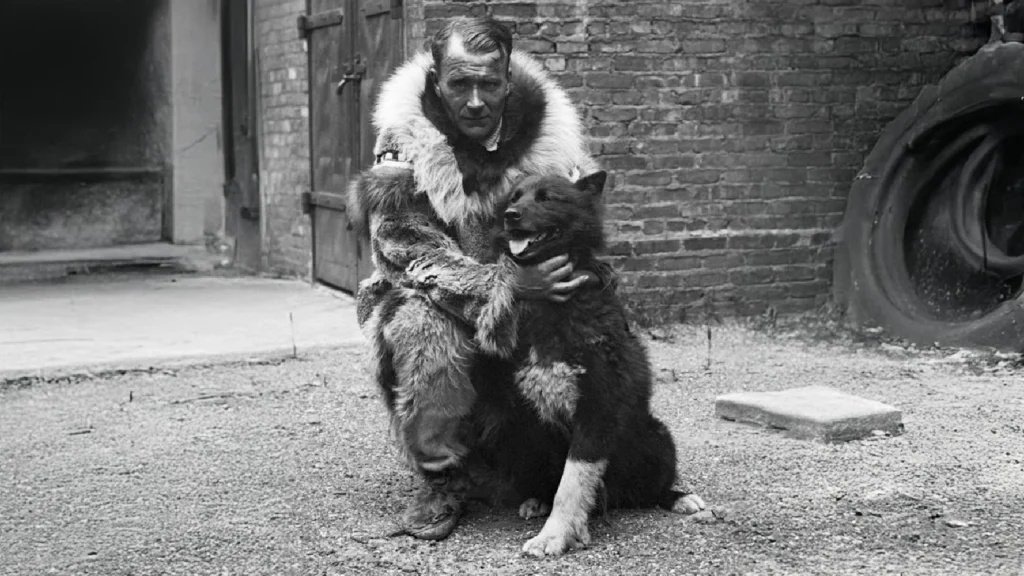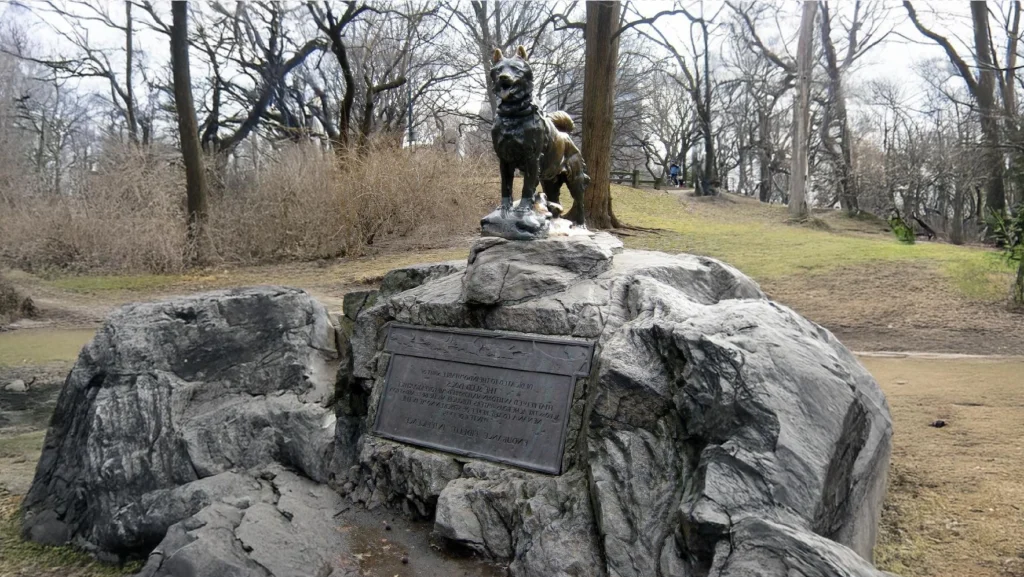Table of Contents
Balto: The Dog Who Saved Nome from a Deadly Epidemic in 1925
In the heart of the unforgiving Alaskan winter of 1925, a deadly diphtheria outbreak threatened to wipe out the isolated town of Nome. As the disease spread, medical supplies dwindled, leaving the town’s children at grave risk. Desperate for a solution, a relay of sled dog teams embarked on a perilous journey through snow and ice to deliver life saving medicine. At the forefront of this heroic mission was Balto, a brave Siberian Husky who led his team through the final leg of the journey. Balto’s courage and determination turned him into a symbol of hope, saving countless lives and earning him worldwide recognition as the hero of Nome.
Setting the Scene: Nome, Alaska in 1925

In 1925, Nome was a small, remote town located on the western coast of Alaska. With winter temperatures regularly plunging to -40°F (-40°C) and heavy snow isolating the town from the rest of the world, Nome’s residents relied heavily on sled dog teams for transportation. At the time, modern technology like airplanes and helicopters weren’t available in the region, making the use of dog sleds essential for travel and communication.
In January of that year, a deadly diphtheria outbreak struck Nome population, particularly endangering the town’s children. Diphtheria is a bacterial infection that affects the respiratory system, and without the right treatment, it can be fatal. With the town’s limited medical resources exhausted, the need for a diphtheria antitoxin became urgent, but the only supply was more than 600 miles away in Anchorage.
The Diphtheria Epidemic and the Call for Help
As diphtheria spread through Nome, the town doctor, Dr. Curtis Welch, knew he had to act quickly to prevent a full scale epidemic. Nome’s supply of diphtheria antitoxin was expired, and without a fresh supply, the disease could devastate the town. The stakes were incredibly high, and the race against time began.
In early January, a plea for help was sent to Anchorage. The problem, however, was how to deliver the medicine. With Alaska’s severe winter conditions, ships and trains were not an option, and the only airplanes available were unable to handle the cold or hazardous weather. It became clear that the only solution was to transport the serum via a relay of sled dog teams, each covering a portion of the 674-mile journey through some of the harshest terrain on Earth.
The Serum Run: A Dangerous Journey
The decision to organize what became known as the “Great Race of Mercy” was made swiftly. The plan was to use sled dog teams to transport the antitoxin across Alaska’s frozen wilderness. Over 20 mushers and their sled dog teams volunteered to be part of the relay, each taking on their portion of the dangerous journey.
The conditions they faced were brutal: temperatures plummeted to -50°F (-45°C), winds howled at 50 mph, and visibility was often reduced to near zero in blizzard like conditions. Despite the risks, these men and their dogs persevered, determined to deliver the life saving serum to Nome.
Balto Role: The Final Leg of the Journey

Among the many sled dog teams was musher Gunnar Kaasen, who led the team responsible for the final leg of the journey. His lead dog was Balto, a black and white Siberian Husky with an unbreakable spirit. The last 53 miles of the journey would prove to be some of the most treacherous, with whiteout conditions and frozen rivers threatening to halt their progress.
In near impossible conditions, Balto led his team through a dangerous stretch of the route, navigating treacherous ice and wind so fierce that it knocked Kaasen’s sled off course. Despite these challenges, Balto’s extraordinary endurance and keen instincts guided the team through to their destination, arriving in Nome on February 2, 1925, with the serum intact.
Balto’s leadership during this crucial final leg earned him a place in history, symbolizing the heroism that defined the entire serum run.
Balto Legacy and Worldwide Fame
Balto’s success in delivering the serum made him an overnight hero, and news of his bravery spread around the world. In Nome, Balto and Kaasen were celebrated, but Balto fame soon extended far beyond Alaska. He became a symbol of courage and the strong bond between humans and dogs.
In 1925, a statue of Balto was erected in New York City’s Central Park to honor his heroism. To this day, the statue remains a beloved attraction, visited by countless dog lovers and tourists who continue to be inspired by his incredible story.
Balto Life After the Serum Run

Following the serum run, Balto became a national celebrity. He and his team toured the United States, where they were met with admiration and praise. However, their fame eventually faded, and Balto spent his later years at the Cleveland Zoo, where he lived out the remainder of his life.
In 1933, Balto passed away at the age of 14, but his legacy was far from over. His body was preserved and is now on display at the Cleveland Museum of Natural History, where visitors can learn about his heroic journey. Balto’s story has been retold through books, films, and documentaries, ensuring that his legacy continues to inspire future generations.
Balto Influence on Modern Dog Heroes
Balto’s story has had a lasting impact, inspiring stories of other heroic dogs in history. From search and rescue missions to therapy dogs providing emotional support, Balto’s legacy highlights the incredible ways dogs continue to serve humans. His story also brought attention to the critical role sled dogs played in exploration and survival in some of the world’s most remote regions.
Today, sled dogs are still used in extreme environments, and Balto’s bravery remains a symbol of the loyalty, endurance, and heroism that working dogs represent.
The True Heroism of Balto: Fact vs. Fiction
While Balto is celebrated as the face of the serum run, it’s important to recognize that the mission’s success was a collective effort. Other sled dogs, particularly Togo, led by musher Leonhard Seppala, also played a critical role in covering a larger and more dangerous portion of the journey. Some debate remains over which dog deserves the most credit, but Balto’s leadership in the final leg cemented his place in history.
Ultimately, the success of the serum run was due to the bravery of all the mushers and their dogs, who risked their lives to save the people of Nome.
Balto Story in Popular Culture

Balto legendary tale has been immortalized in popular culture, most notably in the 1995 animated film Balto, which introduced his story to a new generation of dog lovers. Additionally, books, television programs, and documentaries have ensured that the Great Race of Mercy remains one of history’s most celebrated tales of canine heroism.
Conclusion: The Enduring Legacy of Balto
Nearly a century after the 1925 serum run, Balto’s story continues to resonate with people worldwide. His courage, loyalty, and unwavering determination serve as timeless reminders of the incredible bond between humans and dogs. Whether visiting his statue in Central Park or watching the movie that brought his legend to life, Balto’s enduring legacy reminds us of the important roles dogs play not just as companions, but as true heroes.
Call to Action: Share this incredible story with friends and fellow dog lovers, and let us know in the comments if you have any personal stories of heroic dogs!
FAQs
What made Balto a hero in the 1925 serum run?
Balto became a hero by leading his sled dog team through the final 53 mile leg of the treacherous journey to deliver life saving diphtheria antitoxin to the town of Nome, Alaska. His leadership in harsh weather conditions helped save countless lives.
Was Balto the only dog involved in the serum run?
No, over 20 mushers and their sled dog teams participated in the relay to transport the antitoxin across 674 miles. Other dogs, such as Togo, also played significant roles, but Balto led the final leg and became the most famous for delivering the serum to Nome.



